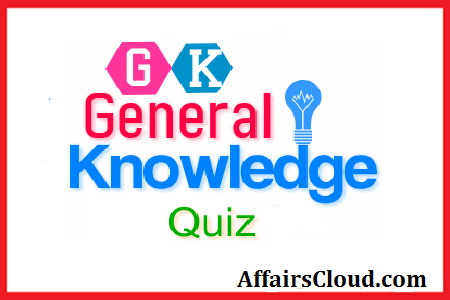Welcome to Online General Knowledge section in Affairs cloud, which is important for all the competitive exams. We have created Some questions related to India Gk(Indian History) !!!
Click Here to Attend all Indian History Quiz
- Who among the following introduced the Doctrine of lapse ?
1.Lord Ripon
2.Lord Cornwallis
3.Lord Dalhousie
4.Lord Wellesley
5.None of theseAnswer – 3.Lord Dalhousie
Explanation :
The doctrine of lapse was an annexation policy purportedly devised by Lord Dalhousie, who was the Governor General for the East India Company in India between 1848 and 1856. - ____________ credited for the creation of modern architecture in post-Independence of India
1.Raj Rewal
2.Charles Mark Correa
3.Nari Gandhi
4.V. Ganapati Sthapati
5.None of theseAnswer – 2.Charles Mark Correa
Explanation :
Charles Mark Correa was an Indian architect, urban planner and activist. Credited for the creation of modern architecture in post-Independence India. - Red Shirt movement is associated with the year
1.1930
2.1942
3.1935
4.1927
5.None of theseAnswer – 1.1930
Explanation :
Red Shirt movement, by name of Khudai Khitmatgar (Persian: “Servants of God”), in support of the Indian National Congress, an action started by Abdul Ghaffar Khan of the North-West Frontier Province of India in 1930. - Who is also known as Father of renaissance of Western India ?
1.Bal Gangadhar Tilak
2.Abdul Ghaffar Khan
3.Mahadev Govind Ranade
4.Raja Ram Mohan Roy
5.None of theseAnswer – 3.Mahadev Govind Ranade
Explanation :
Justice Mahadev Govind Ranade (1842-1901) was a distinguished Indian scholar, social reformer and author, sometimes called a Father of renaissance of Western India. He was one of the founding members of the Indian National Congress . - Who was considered as Gandhiji’s political guru ?
1.Ram Manohar Lohia
2.Sardar Vallabh Bhai Patel
3.Subhash Chandra Bose
4.Gopal Krishna Gokhle
5.None of theseAnswer – 4.Gopal Krishna Gokhle
Explanation :
Gopal Krishna Gokhle was Gandhiji’s political guru. Following Gokhle’s advice, Gandhiji roamed around India’s every nook and corner to understand the country and her people better. - In ancient period, Sushruta is associated with which field ?
1.Architecture
2.Medicinie
3.Polity
4.Literature
5.None of theseAnswer – 2.Medicinie
Explanation :
Sushruta, or Suśruta was an ancient Indian physician, known as the main author of the treatise The Compendium of Suśruta. - The Hoysala empire have ruled present state of _______________
1.Karnataka
2.Maharashtra
3.Tamil nadu
4.New Delhi
5.None of theseAnswer – 1.Karnataka
Explanation :
The Hoysala empire was a prominent Southern Indian Kannadiga empire that ruled most of the modern-day state of Karnataka between the 10th and the 14th centuries - An ancient city Taxila is the capital of which state ?
1.Punjab
2.Odisha
3.West Bengal
4.Madhya Pradesh
5.None of theseAnswer – 1.Punjab
Explanation :
Taxila the ancient capital of the eastern Punjab, the country between the rivers Indus and Hydaspes. - The Vikramshila university is located in which Indian State ?
1.Uttar Pradesh
2.West Bengal
3.Bihar
4.Maharashtra
5.None of theseAnswer – 3.Bihar
Explanation :
The Vikramshila University remains are located near Antichak in Bhagalpur district of Bihar. Vikramashila was established by King Dharmapala (783 to 820). - The Battle of Vatapi held between Pallavas and __________
1.Cholas
2.Chalukyas
3.Cheras
4.Pandyas
5.None of theseAnswer – 2.Chalukyas
Explanation :
The Battle of Vatapi was a decisive engagement which took place between the Pallavas and Chalukyas near the Chalukya capital of Vatapi (present day Badami) in 642. The battle resulted in the defeat and death of the Chalukya king Pulakeshin II and the commencement of Pallava occupation of Vatapi which lasted until 654.
AffairsCloud Recommends Oliveboard Mock Test
AffairsCloud Ebook - Support Us to Grow
Govt Jobs by Category
Bank Jobs Notification



